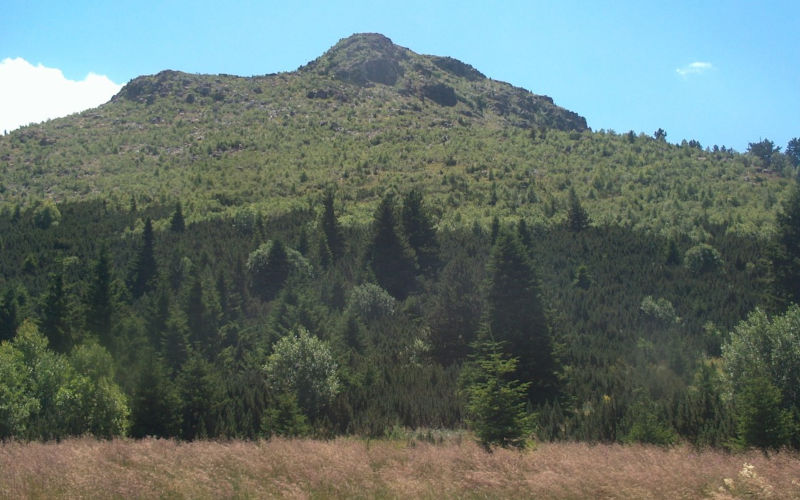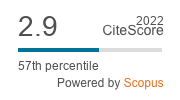Phytoclimatic Stages and Vegetation in Baden - Württemberg and Emilia - Romagna
DOI:
https://doi.org/10.3097/LO.201967Keywords:
Germany, Italy, climate classification, ecological regionalization, landscape ecology, GIS mappingAbstract
The assessment of ecosystems and landscapes requires reliable and simple tools. Climate determines broad type and distribution of ecosystems. Therefore, it is a major factor to consider in environmental analysis and ecological regionalization. A standardized bioclimatic classification would be useful to characterize and compare different ecosystems. In this paper, Defaut’s Phytoclimatic System (DSPS) was tested at regional scale in two European areas: Baden-Württemberg (Germany) and Emilia-Romagna (Italy). DSPS phytoclimatic units and vegetation belts and climatic parameters are illustrated and discussed. In addition, as an example application, a map of phytoclimatic units of Emilia-Romagna is designed. Some challenges in matching vegetation to DSPS were found: 1) in areas where transition from one stage to another are not sharply delineated and different vegetation types are intermixed; 2) in alluvial lowlands; 3) in heavily anthropized areas. In conclusion, the results of this study suggest that DSPS can be a useful tool in ecological regionalization and in landscape analysis.
References
Bailey, H. P. (1948). Proposal for a modification of Koeppen’s definitions of the dry climates. Yearbook of the Association of Pacific Coast Geographers, 10, 33-38.
Bailey, H. P. (1965). Weltkarten zur klimakunde world maps of climatology.weltkarten zur klimakunde. World Maps of ClimatologyGeographical Review, 55(3), 455-458.
Bailey, R. G. (1976). Ecoregions of the United States,
Bailey, R. G. (2009). Ecosystem geography: From ecoregions to sites. Ecosystem Geography: From Ecoregions to Sites,
Bailey, R. G. (1987). Suggested hierarchy of criteria for multi-scale ecosystem mapping. Landscape and Urban Planning, 14(C), 313-319. doi:10.1016/0169-2046(87)90042-9
Biondi, E., Allegrezza, M., Casavecchia, S., Pesaresi, S., & Vagge, I. (2006). Lineamenti vegetazionali e paesaggio vegetale dell'appennino centrale e settentrionale. Biogeographia, 27, 35-129.
Bohn, U., Gollub, G., & Hettwer, C. (2000). Karte Der Natürlichen Vegetation Europas,
Botti, D. (2018). A phytoclimatic map of europe. CyberGeo, 2018 doi:10.4000/cybergeo.29495
Box, E. O. (1981). Predicting physiognomic vegetation types with climate variables. Vegetatio, 45(2), 127-139. doi:10.1007/BF00119222
Box, E. O., & Fujiwara, K. (2005). Vegetation types and their broad-scale distribution. Vegetation Ecology, , 106-128.
Box, E. O., & Fujiwara, K. (2015). Warm-temperate deciduous forests: Concept and global overview doi:10.1007/978-3-319-01261-2_2
Chiarucci, A., Araújo, M. B., Decocq, G., Beierkuhnlein, C., & Fernández-Palacios, J. M. (2010). The concept of potential natural vegetation: An epitaph? Journal of Vegetation Science, 21(6), 1172-1178. doi:10.1111/j.1654-1103.2010.01218.x
Conrad, O., Bechtel, B., Bock, M., Dietrich, H., Fischer, E., Gerlitz, L., . . . Böhner, J. (2015). System for automated geoscientific analyses (SAGA) v. 2.1.4. Geoscientific Model Development, 8(7), 1991-2007. doi:10.5194/gmd-8-1991-2015
Coops, N. C., Wulder, M. A., & Iwanicka, D. (2009). An environmental domain classification of canada using earth observation data for biodiversity assessment. Ecological Informatics, 4(1), 8-22. doi:10.1016/j.ecoinf.2008.09.005
De Laubenfels, D. J. (1975). Mapping the world's vegetation. Mapping the World's Vegetation,
Defaut, B. (0000). Vers Une Modélisation De l'Evolution Climatique Au Quaternaire, (1991)
Defaut, B. (1992). Données Complémentaires Sur Les Relations Enter Climat Actuel Et Étages De Végétation Dans Le Domaine Paléarctique,
Defaut, B. (2001). Carte de la végétation de la france. Matér.Entomocénotiques, 6, 113-121.
Defaut, B. (2015). Nouvelles considérations sur les phytocli-mats du maroc. Application Au Maroc Oriental.Matéri-Aux Orthoptériques Et Entomocénotiques, 20, 97-106.
Defaut, B. (1996). Un système d'étages phytoclimatiques pour le domaine paléarctique. Corrélations entre végétation et paramètres climatiques. Matériaux Entomocénotiques, 1, 5-46.
Emberger, L. (1939). Aperçu général sur la végétation du maroc. Veröff.Geobot.Inst.Rübel Zürich, 14, 40-157.
Emberger, L. (1964). La position phytogéographique du maroc dans l’ensemble méditerranéen. Al Awamia, 12, 1-15.
Emberger, L. (1955). Une classification biogéographique des climats. Natur.Monspel., Série Botanique, 7, 3-43.
Ferrari, C. (1997). Le fasce di vegetazione dell'emilia romagna. Annali Facoltà Di Scienze Matematiche, Fisiche e Naturali, , 25-41.
Forman, R. T. T., & Godron, M. (1986). Landscape Ecology,
Gamper, U., Filesi, L., Buffa, G., & Sburlino, G. (2008). Phytocaenotic diversity of the N-adriatic coastal sand dunes. 1 - the phanerophytic communities. [Diversità fitocenotica delle dune costiere nord-adriatiche 1 - Le comunità fanerofitiche] Fitosociologia, 45(1), 3-21.
Gaussen, H. (1957). Les ensembles écologiques de la péninsule hispanique. Publicaciones Del Instituto De Biología Aplicada, Barcelona, 26, 9-17.
Hargrove, W. W., & Hoffman, F. M. (1999). Using multivariate clustering to characterize ecoregion borders. Computing in Science and Engineering, 1(4), 18-25. doi:10.1109/5992.774837
Holdridge, L. R. (1967). Life Zone Ecology,
Holdridge, L. R. (1947). Determination of world plant formations from simple climatic data. Science, 105(2727), 367-368. doi:10.1126/science.105.2727.367
Iwahashi, J., & Pike, R. J. (2007). Automated classifications of topography from DEMs by an unsupervised nested-means algorithm and a three-part geometric signature. Geomorphology, 86(3-4), 409-440. doi:10.1016/j.geomorph.2006.09.012
Klijn, F., & de Haes, H. A. U. (1994). A hierarchical approach to ecosystems and its implications for ecological land classification. Landscape Ecology, 9(2), 89-104. doi:10.1007/BF00124376
Krönert, R., Steinhardt, U., & Volk, M. (2001). Landscape balance and landscape assessment. Landscape Balance and Landscape Assessment,
Küchler, A. W. (1967). Vegetation Mapping,
Leathwick, J. R., Overton, J. M., & McLeod, M. (2003). An environmental domain classification of new zealand and its use as a tool for biodiversity management. Conservation Biology, 17(6), 1612-1623. doi:10.1111/j.1523-1739.2003.00469.x
Lehmann, A., Allenbach, K., Maggini, R., Richard, J. -., Jaquet, J. -., & Dao, H. (2010). Swiss environment domains. A newspatial framework for reporting on the environment. Environmental Studies, 1024
Lugo, A. E., Brown, S. L., Dodson, R., Smith, T. S., & Shugart, H. H. (1999). The holdridge life zones of the conterminous united states in relation to ecosystem mapping. Journal of Biogeography, 26(5), 1025-1038. doi:10.1046/j.1365-2699.1999.00329.x
Morat, P. (1969). Note sur l'application à madagascar du quotient pluviothermique d'emberger. Cah.ORSTOM, Sér.Biol., 10, 117-132.
Morgan, F., Barker, G., Briggs, C., Price, R., & Keys, H. (2007). Environmental domains of antarctica version 2.0 final report. Environmental Domains of Antarctica Version 2.0 Final Report,
Mücher, C. A., Klijn, J. A., Wascher, D. M., & Schaminée, J. H. J. (2010). A new european landscape classification (LANMAP): A transparent, flexible and user-oriented methodology to distinguish landscapes. Ecological Indicators, 10(1), 87-103. doi:10.1016/j.ecolind.2009.03.018
Mühr, B. (2010). Das Klima in Baden-Württemberg-Klimadiagramme Weltweit,
Müller, T., Oberdorfer, S., & Philippi, G. (1974). Die potentielle natürliche vegetation von baden-württemberg. Die Potentielle Natürliche Vegetation Von Baden-Württemberg, 6
Oberdorfer, E. (1968). Studien in den wäldern des Carpinion‐Verbandes im apennin an der südwestgrenze des vorkommens von carpinus betulus. Feddes Repertorium, 77(1), 65-74. doi:10.1002/fedr.4910770108
Ozenda, P. (2002). Perspectives Pour Une Géobiologie Des Montagnes,
Perera, N. P. (1968). Some problems of climate-vegetation correlations with special reference to ceylon. Vidyodaya Journal of Arts, Science, and Letters, 1, 173-184.
Perosino, G. C., & Zaccara, P. (2006). Elementi Climatici Del Piemonte,
Piccoli, F. (1997). La vegetazione della bassa pianura. Annali Facoltà Di Scienze Matematiche, Fisiche e Naturali, , 43-57.
Poli, E. (1965). La Vegetazione Altomontana Dell'Etna,
Puppi Branzi, G. (1997). La vegetazione collinare e montana dell'emilia-romagna. Guida Alla Vegetazione Dell'Emilia-Romagna,
Reidl, K., Suck, R., Bushart, M., Herter, W., Koltzenburg, M., Michiels, H. -., . . . Bortt, W. (2013). Potentielle natürliche vegetation von baden-württemberg. Potentielle Natürliche Vegetation Von Baden-Württemberg,
Rivas-Martínez, S. (1987). Memoria Del Mapa De Series De Vegetación De España,
Rubel, F., & Kottek, M. (2011). Comments on: "the thermal zones of the earth" by wladimir köppen (1884). Meteorologische Zeitschrift, 20(3), 361-365. doi:10.1127/0941-2948/2011/0285
Schroeder, F. -. (1998). Lehrbuch der pflanzengeographie. Lehrbuch Der Pflanzengeographie,
Scripter, M. W. (1970). Nested-means map classes for statistical maps. Annals of the Association of American Geographers, 60(2), 385-392. doi:10.1111/j.1467-8306.1970.tb00727.x
Shroeder, F. G. (1983). Die thermischen vegetationszonen der erde. Tuexenia, 3, 31-46.
Somodi, I., Molnár, Z., & Ewald, J. (2012). Towards a more transparent use of the potential natural vegetation concept - an answer to chiarucci et al. Journal of Vegetation Science, 23(3), 590-595. doi:10.1111/j.1654-1103.2011.01378.x
Svenning, J. -., & Skov, F. (2004). Limited filling of the potential range in european tree species. Ecology Letters, 7(7), 565-573. doi:10.1111/j.1461-0248.2004.00614.x
Tomaselli, M. (1997). La vegetazione soprasilvatica dell'appennino tosco-emiliano. Guida Alla Vegetazione Dell'Emilia Romagna, , 81-112.
Trewartha, G. T., & Horn, L. H. (1980). An Introduction to Climate-McGraw-Hill,
Troll, C., & Paffen, K. (1964). Karte der jahreszeiten-klimate der erde. Erdkunde, 18(1), 5-28.
Ubaldi, D. (1980). La fascia collinare e submontana. Flora e Vegetazione Dell'Emilia-Romagna,
Ubaldi, D., Puppi, G., & Zanotti, A. L. (1996). Carta fitoclimatica dell'emilia-romagna 1:500,000. Regione Emilia Romagna Assessorato Territorio Programmazione e Ambiente, Studi e Documentazioni, 47, 1-79.
Vianelli, M. (1998). Il clima. Parco Regionale Alto Appennino Modenese,
Walter, H. (1985). Vegetation of the Earth and Ecological Systems of the Geobiosphere,
Walter, H., & Box, E. (1976). Global classification of natural terrestrial ecosystems. Vegetatio, 32(2), 75-81. doi:10.1007/BF02111901
Whittaker, R. H. (1975). Communities and Ecosystems,
Wiken, E. B., & Ironside, G. (1977). The development of ecological (biophysical) land classification in canada. Landscape Planning, 4(C), 273-275. doi:10.1016/0304-3924(77)90029-6

Downloads
Published
How to Cite
Issue
Section
License
Copyright (c) 2019 Dario Botti

This work is licensed under a Creative Commons Attribution 4.0 International License.










